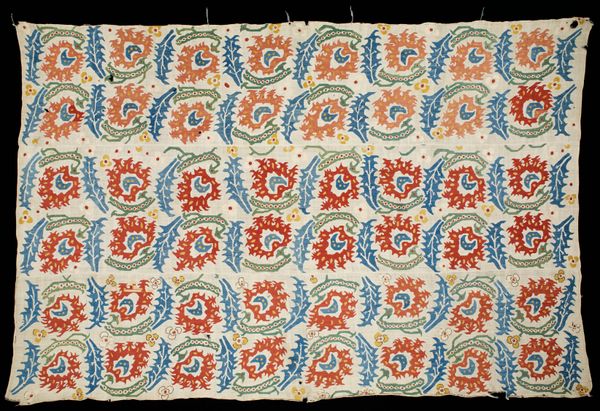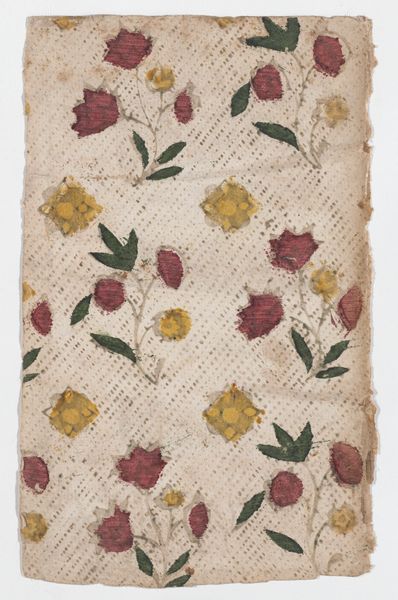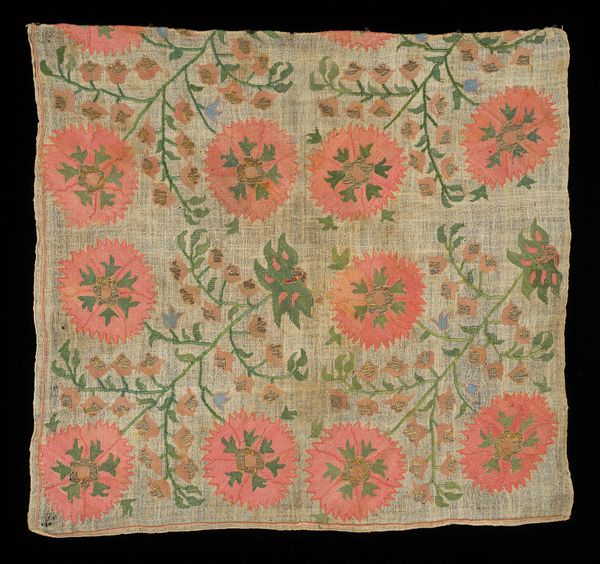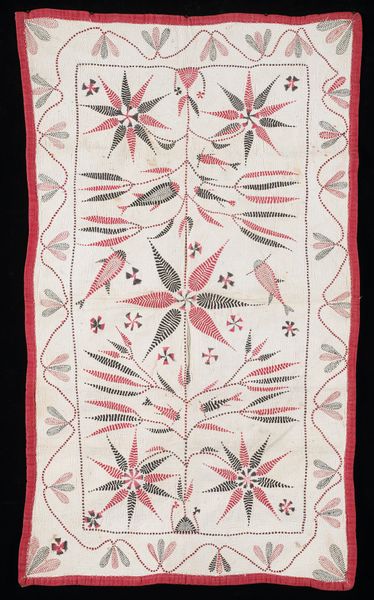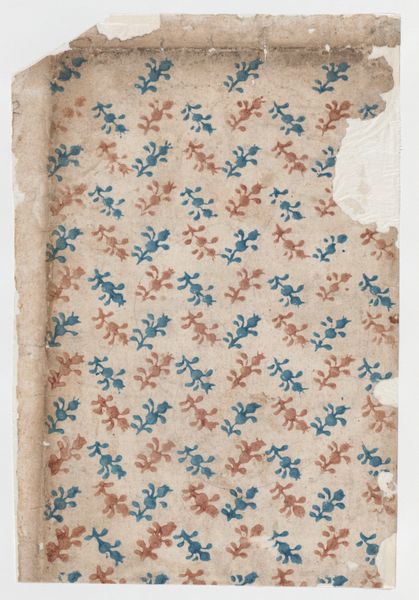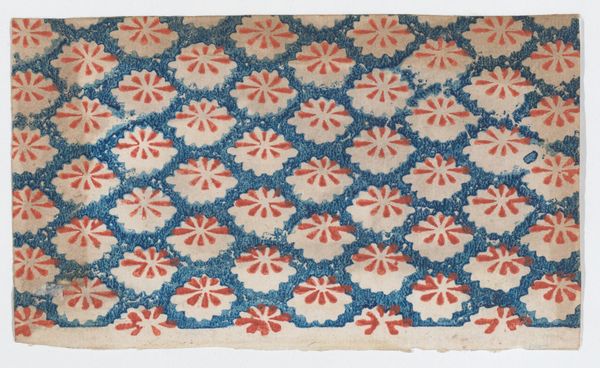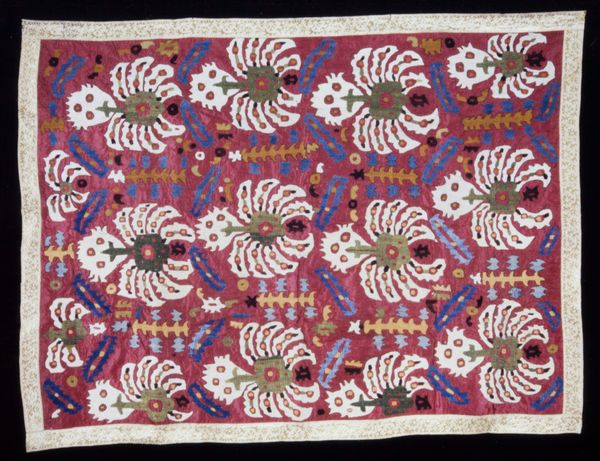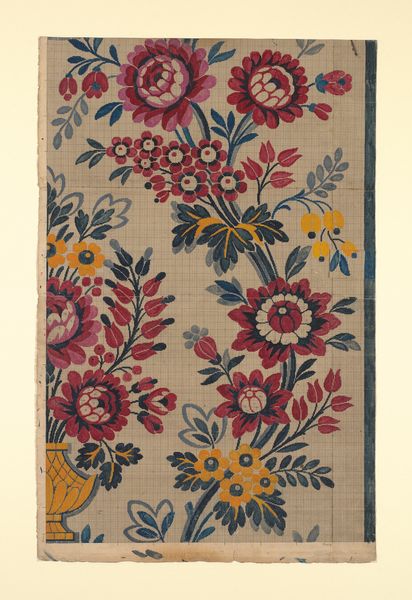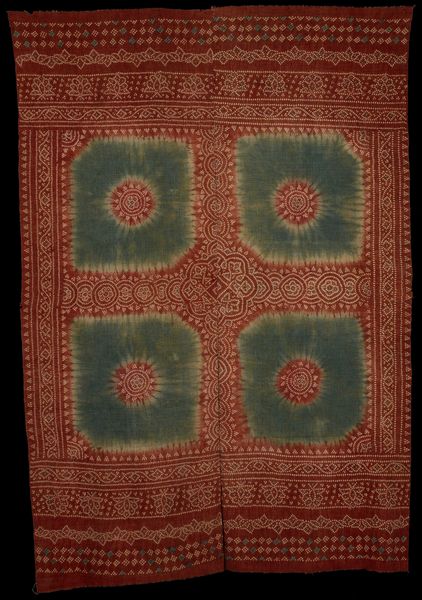
textile
#
pattern heavy
#
natural stone pattern
#
naturalistic pattern
#
textile
#
geometric pattern
#
ethnic pattern
#
organic pattern
#
repetition of pattern
#
pattern repetition
#
islamic-art
#
textile design
#
layered pattern
Dimensions: 21 1/16 x 16 in. (53.5 x 40.64 cm)
Copyright: Public Domain
Curator: I'm immediately struck by the visual harmony. There’s such a pleasant interplay between the patterns and the raw texture of the fabric, isn't there? Editor: Indeed. Let's explore this “Embroidered Panel," dating back to the 19th century Ottoman era. Housed here at the Minneapolis Institute of Art, it showcases repeating floral motifs. What narratives do you think textiles can convey? Curator: For me, it’s primarily about the materiality—the tactile quality of the cotton and silk. Who were the artisans behind these panels? What were their working conditions? Each stitch represents a moment, a physical act of labor. And what dyes were used to create those bold blues and reds? Editor: Precisely. When we think about women's labor, it’s crucial to understand embroidery's historical role in women's economic and creative lives. Who commissioned it, and what stories did this particular panel communicate within its social context? Did it function as a form of coded language? Curator: Possibly. I find the grid layout compelling; the repetition isn’t mechanical but lends an almost organic feel, as if each flower is unique despite the pattern. Look closer, and you'll see minute imperfections. Editor: It suggests a delicate balancing act between standardization and creative individuality. It raises questions about gendered labour practices of the period and challenges that dichotomy of "high art" versus "craft." I also think it offers some insight into notions of feminine domesticity and artistry. Curator: Absolutely, by closely examining the stitches, the fabric, and the dyes used, we can unearth narratives that challenge conventional artistic hierarchies. Textiles were not mere decoration, but rather active participants in creating history. Editor: Right. Objects like this are often silent witnesses to social transformations. I wonder how this object traveled, its changes in ownership, and its presence here today. It provokes deeper questions about empire and diasporic movements, especially about whose stories are given importance within museum walls. Curator: Well, I now have more to consider regarding its cultural impact. Editor: And I'm drawn into how those very physical processes translate cultural histories in the panel. It invites us to recognize and reconsider embedded narratives within the everyday objects.
Comments
No comments
Be the first to comment and join the conversation on the ultimate creative platform.
